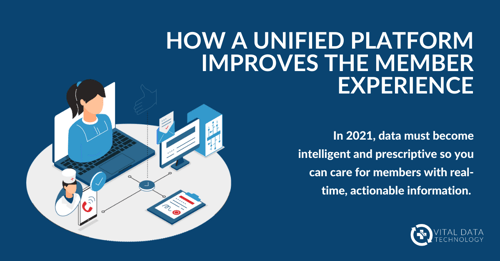By thinking differently about data aggregation and sharing across the enterprise, health plans can achieve new levels of member engagement.
“If you can start communicating to members prescriptively and in a way that is relevant for them, based on real-time information rather than what happened last month, quarter or year, health plans can ensure all stakeholders are on the same page,” D’Ambrosia advises. “That is where the unique opportunity is for health plans to demonstrate to members that they are trusted advocates – members want and need that type of relationship.”
While telehealth continues to garner significant attention, and rightfully so considering current constraints on care access, its success and that of other platforms depend on a strong data foundation.
“When we talk about the pandemic being the driver for that innovation, everyone talks about telehealth, but that’s just a piece of the bigger picture,” D’Ambrosia argues. “It’s the fact that there is all of this data as well as advances in data science and predictive models – and we can leverage these things to effect a positive outcome for the member.”
The process begins by looking internally for signs of interdepartmental fragmentation and removing them.
“Quality management is typically a department that is siloed,” D’Ambrosia warns. “On the Medicare Advantage side, risk adjustment is typically separated from the rest of the house. Care management, case management, population health — in most cases, there are disconnects.”
While bringing these disparate units and information together requires a major technical lift, the payoff for predictive analytics is too significant to overlook.
“We’ve got all the conventional data with labs, Rx, claims, and more, but there’s all of this data that’s generated by the solutions in real-time that need to be taken into consideration. How a health plan can connect everything is the key here. The technical capability to combine all of that data is what healthcare needs to solve for, and how we’re making all of that data available to stakeholders – conventional, unconventional, and operational.”
After a tumultuous year of disruption, healthcare consumers are looking for health plans that are able to meet their changing needs. For payers to meet and exceed these expectations, they need to work quickly to put in place a unified data structure that allows for building solutions and creating real-time intelligence that makes an impact at the point of care.
The pandemic may have accelerated digital transformation by decades, but much more work is left to be done to ensures future success.

